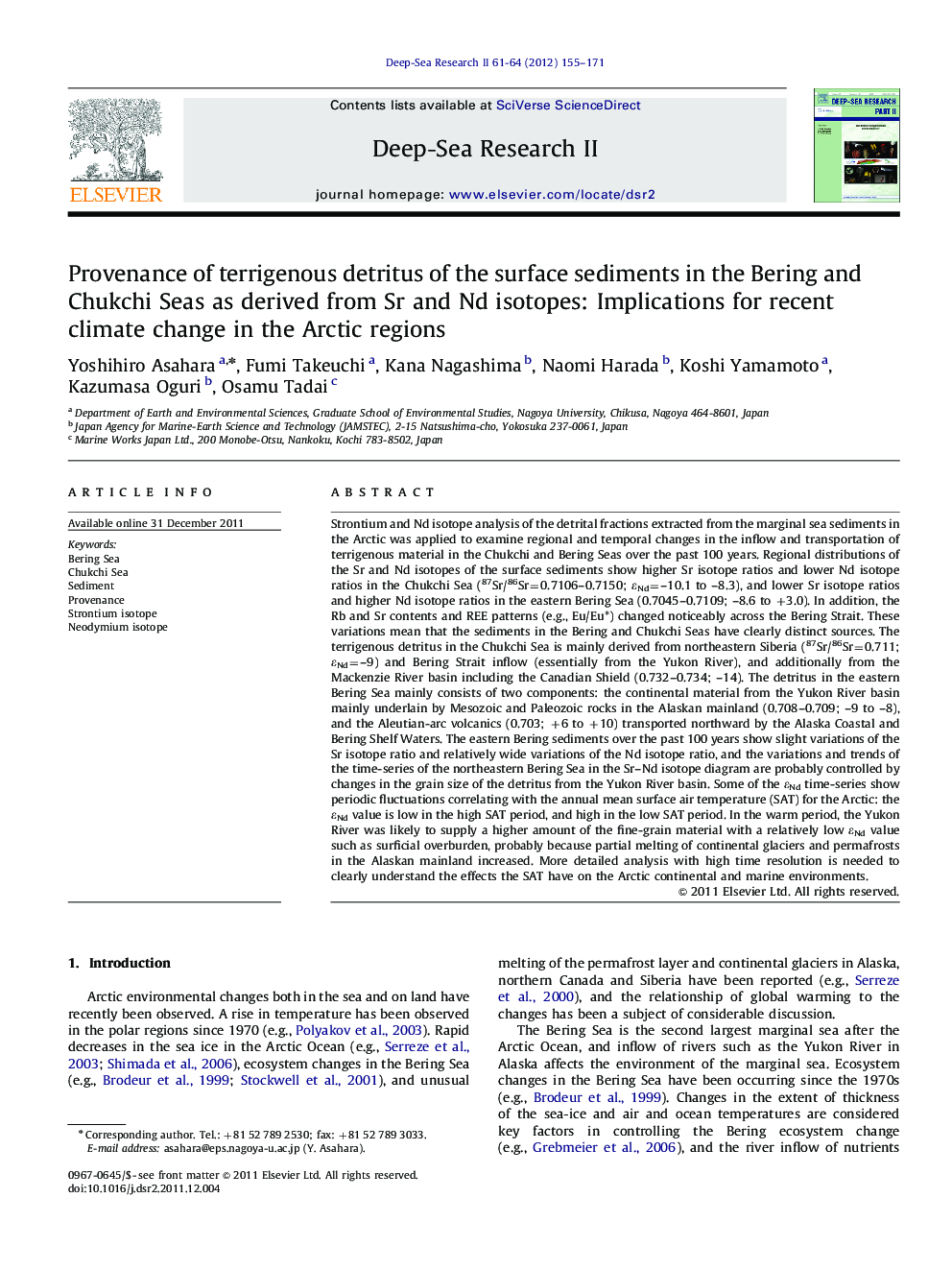| کد مقاله | کد نشریه | سال انتشار | مقاله انگلیسی | نسخه تمام متن |
|---|---|---|---|---|
| 4536775 | 1626457 | 2012 | 17 صفحه PDF | دانلود رایگان |

Strontium and Nd isotope analysis of the detrital fractions extracted from the marginal sea sediments in the Arctic was applied to examine regional and temporal changes in the inflow and transportation of terrigenous material in the Chukchi and Bering Seas over the past 100 years. Regional distributions of the Sr and Nd isotopes of the surface sediments show higher Sr isotope ratios and lower Nd isotope ratios in the Chukchi Sea (87Sr/86Sr=0.7106–0.7150; εNd=–10.1 to –8.3), and lower Sr isotope ratios and higher Nd isotope ratios in the eastern Bering Sea (0.7045–0.7109; –8.6 to +3.0). In addition, the Rb and Sr contents and REE patterns (e.g., Eu/Eu⁎) changed noticeably across the Bering Strait. These variations mean that the sediments in the Bering and Chukchi Seas have clearly distinct sources. The terrigenous detritus in the Chukchi Sea is mainly derived from northeastern Siberia (87Sr/86Sr=0.711; εNd=–9) and Bering Strait inflow (essentially from the Yukon River), and additionally from the Mackenzie River basin including the Canadian Shield (0.732–0.734; –14). The detritus in the eastern Bering Sea mainly consists of two components: the continental material from the Yukon River basin mainly underlain by Mesozoic and Paleozoic rocks in the Alaskan mainland (0.708–0.709; –9 to –8), and the Aleutian-arc volcanics (0.703; +6 to +10) transported northward by the Alaska Coastal and Bering Shelf Waters. The eastern Bering sediments over the past 100 years show slight variations of the Sr isotope ratio and relatively wide variations of the Nd isotope ratio, and the variations and trends of the time-series of the northeastern Bering Sea in the Sr–Nd isotope diagram are probably controlled by changes in the grain size of the detritus from the Yukon River basin. Some of the εNd time-series show periodic fluctuations correlating with the annual mean surface air temperature (SAT) for the Arctic: the εNd value is low in the high SAT period, and high in the low SAT period. In the warm period, the Yukon River was likely to supply a higher amount of the fine-grain material with a relatively low εNd value such as surficial overburden, probably because partial melting of continental glaciers and permafrosts in the Alaskan mainland increased. More detailed analysis with high time resolution is needed to clearly understand the effects the SAT have on the Arctic continental and marine environments.
Journal: Deep Sea Research Part II: Topical Studies in Oceanography - Volumes 61–64, February–March 2012, Pages 155–171